Words Sarah Langton-Lockton Photographs Posy Gentles and Edward Mannering
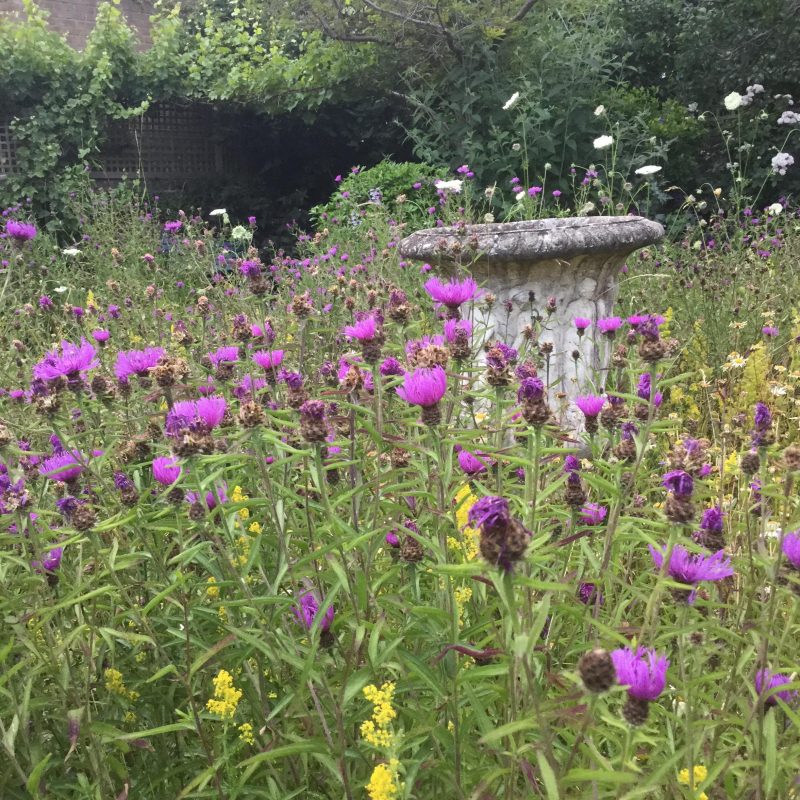
The meadow is still colourful at the end of July
The star of the show in late July is wild carrot, Daucus carota, most glamorously known, among its many common names, as Queen Anne’s Lace. Legend has it that Queen Anne pricked her finger while sewing and a drop of her blood fell on the white lace. Daucus carota is found in profusion in the Kent countryside, including Harty Ferry where it grows in dense borders along the coastal path. The reddish pink buds open to lacecap-like umbels – an explosion of pure white flowers, surrounding a dark red spot in the centre of the umbel. The seed heads, also starting to form now, are equally beautiful, furling upwards like an inverted umbrella or elongated bird’s nest.
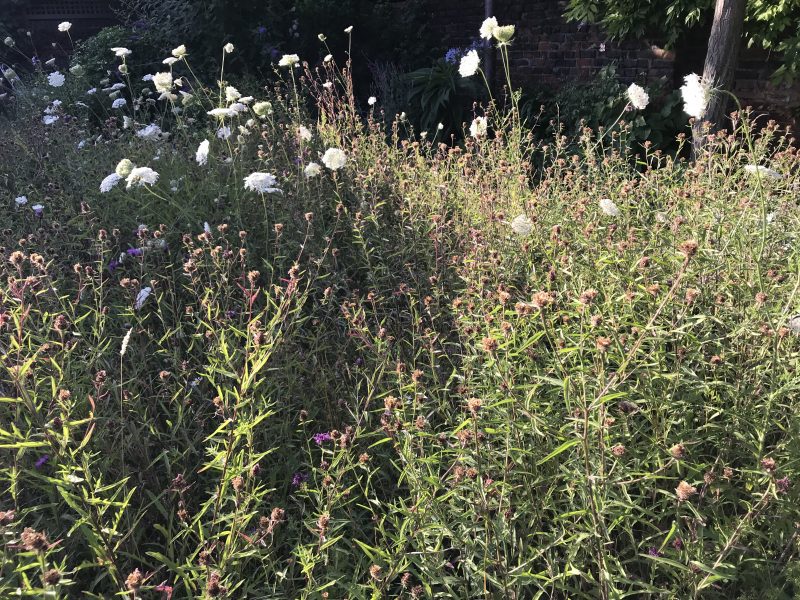
Queen Anne’s Lace at Harty Ferry
The ‘show’ in the context of this article is not the dry, grassy banks of the Swale estuary, but a remarkable wildflower meadow in the garden of a modern townhouse in medieval Abbey Street. The garden belongs to Amanda and Julian Mannering. They open it to the public most years on Faversham Open Gardens Day, held annually on the last Sunday in June. The wildflower meadow attracts up to 800 people. These visitors are still and silent in response to its vibe of calm and ancient tranquillity.
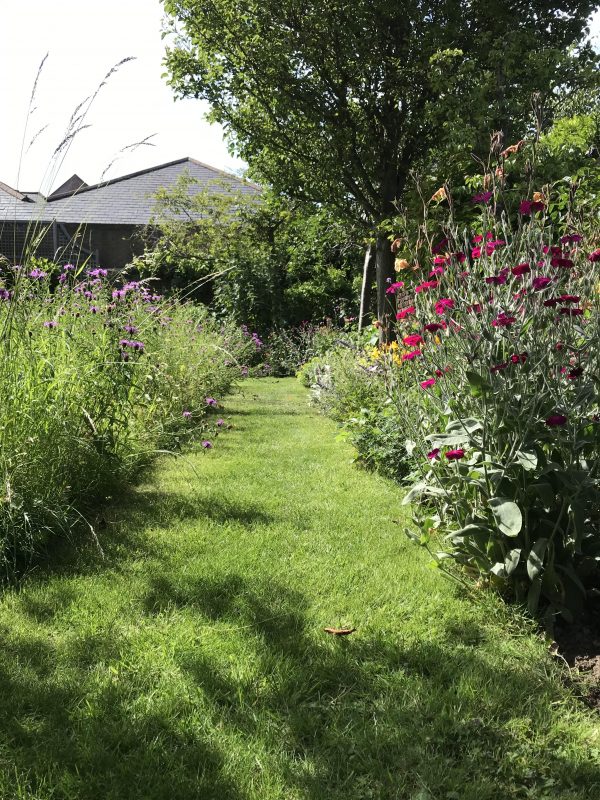
Mown lawn and well-planted borders frame the meadow
The Mannerings moved to Abbey Street in November 1991. It had been, says Amanda, ‘quite a rundown corner of Faversham.’ In the 1980s, she explains, the council was selling off the Abbey Street houses. The site of what is now their house and garden had contained several cottages, one of which was leaning out so far into the adjacent Smack Alley that it was impassable. The cottages were eventually knocked down. The site, by now derelict, was acquired by a local builder, Mr Grogan. Refused permission to build one house at the Abbey Street end of the site and two more at the bottom of the garden, he built, in 1987/88, a single red brick townhouse. In accordance with his planning permission, which required off-street parking for five cars, a large part of the garden became essentially a stretch of motorway-grade tarmac.
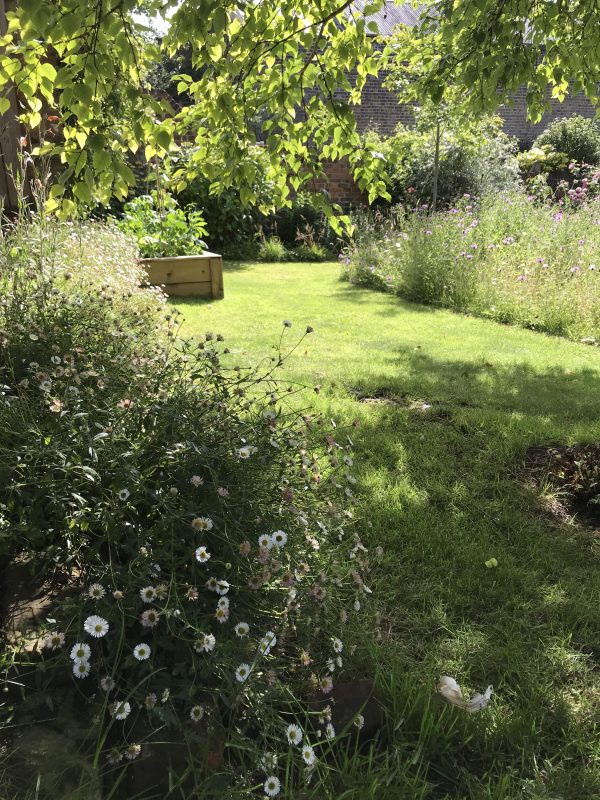
The tranquillity of the garden is palpable
A digger was brought in to remove this, a lawn was made and a fence installed on the right-hand side of the garden, which was open to Smack Alley. The garden revealed its tranquillity early on. ‘It was the first afternoon,’ says Amanda. ‘Julian had gone up to London, the children were at school and I decided to tackle the brambles, of which there were many. It just felt completely peaceful’ – and still does. ‘If I’m feeling cross, I only have to come out here for a minute and I’m fine,’ she says.
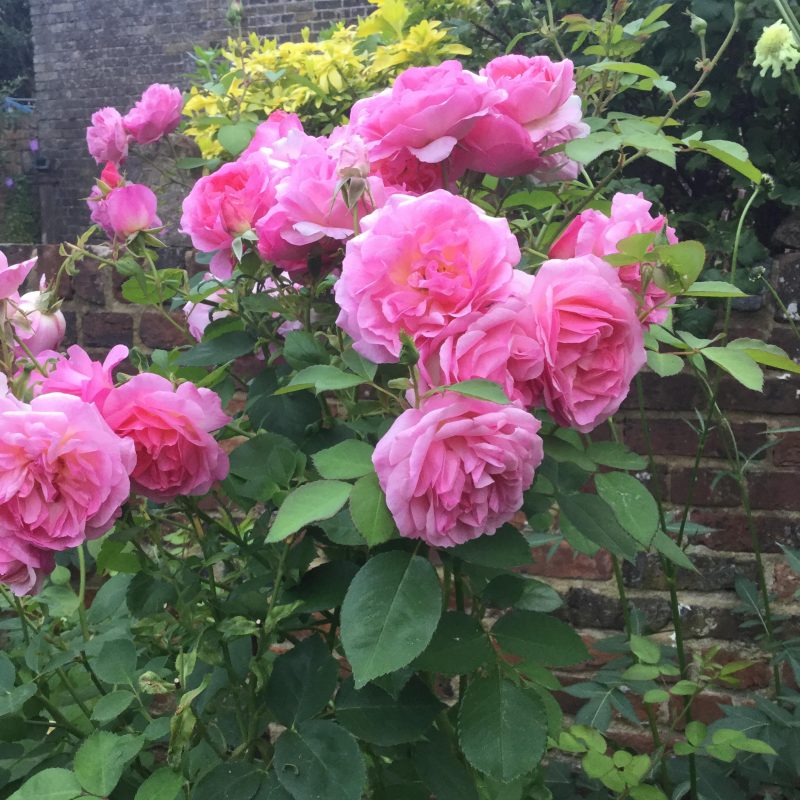

Roses are everywhere
They planted up the garden – lots of lawn, flower beds either side, apple trees, an amelanchier and a birch. Amanda’s mother-in-law gave a Kiftsgate rose for the ancient wall at the far end of the garden. This followed its rampant nature and was later replaced by a wisteria. A vine currently sporting bunches of tiny grapes creates an arbour in one corner. There are roses everywhere. Initially, there were grain hoppers beyond the far wall – ‘they made a frightful noise when they were going, but they weren’t going very often’ – replaced now by new cottages. An extension was built to house an office for Julian, who works for Seaforth Publishing. Having commuted for 20 years, he now works from home.
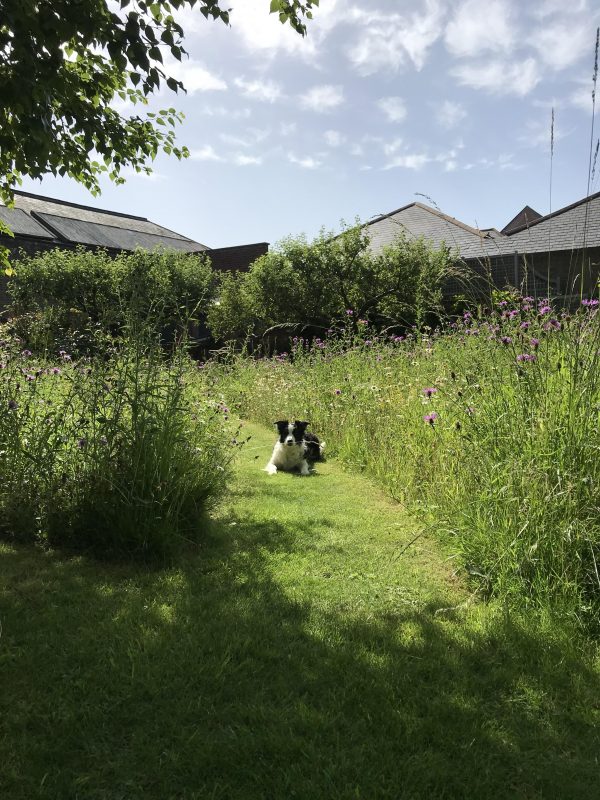
The Mannerings’ border collie Pippin on the path that bisects the meadow
The idea for a wildflower meadow developed from a visit to friends in Herefordshire who had converted a bit of a huge garden to meadow. ‘Coincidentally,’ says Amanda, ‘we had friends down from London, one of whom said: “What is all this grass for?” That remark confirmed that we would do the meadow. A lot of people said it wouldn’t work and we should have taken off the top layer and put down sand. The soil, however, was already poor.’ Julian mowed the shape for the meadow – a perfect square within the 65ft square far end of the garden. Wide mown paths frame the meadow and a single narrow path crosses it from corner to corner.
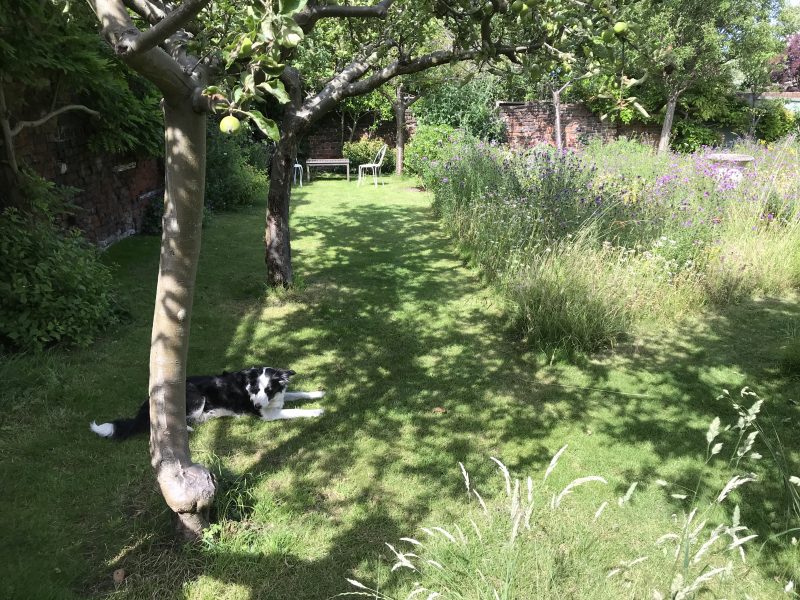
The end garden is packed with mature plants, including apple trees
In the first year, what came up was cow parsley and its relative, wild carrot. It looked eccentric, so they rang Emorsgate Seeds, who are specialist growers of British wildflower and wild grass seeds; they are warrant holders to HRH The Prince of Wales, renowned for his wildflower meadow at Highgrove. The advice from Emorsgate Seeds was to plant lots of yellow rattle, which suppresses the growth of grasses, and to use their meadow mix. Amanda and Julian raked the meadow, mixed the seed with sand and broadcast it. The result was amazing, as if an ancient meadow already lay sleeping beneath the bruised and battered urban soil.
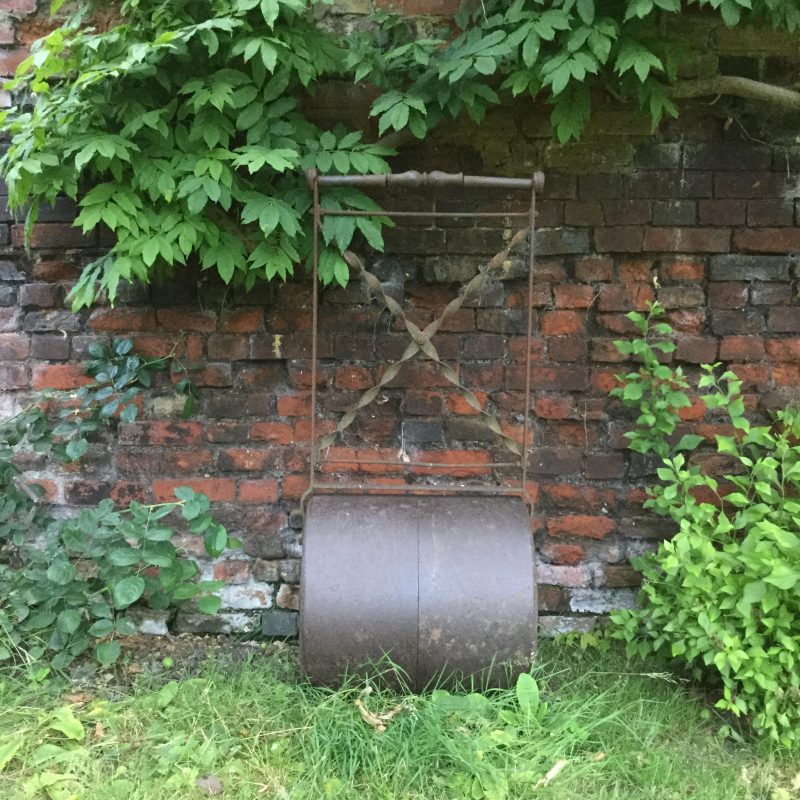
An antique lawn roller ornaments an ancient wall
The meadow is now cut with a ‘proper scythe,’ says Amanda, between the end of July and August. She and Julian went on a scything course, held on an extraordinary farm where the meadows had not been mown for centuries. ‘The farmer said you mustn’t mow,’ says Amanda, ‘only scythe it. The cuttings should be left for two to three weeks for the seeds to scatter. Then they can be raked up.’ Some goes on the compost heap.
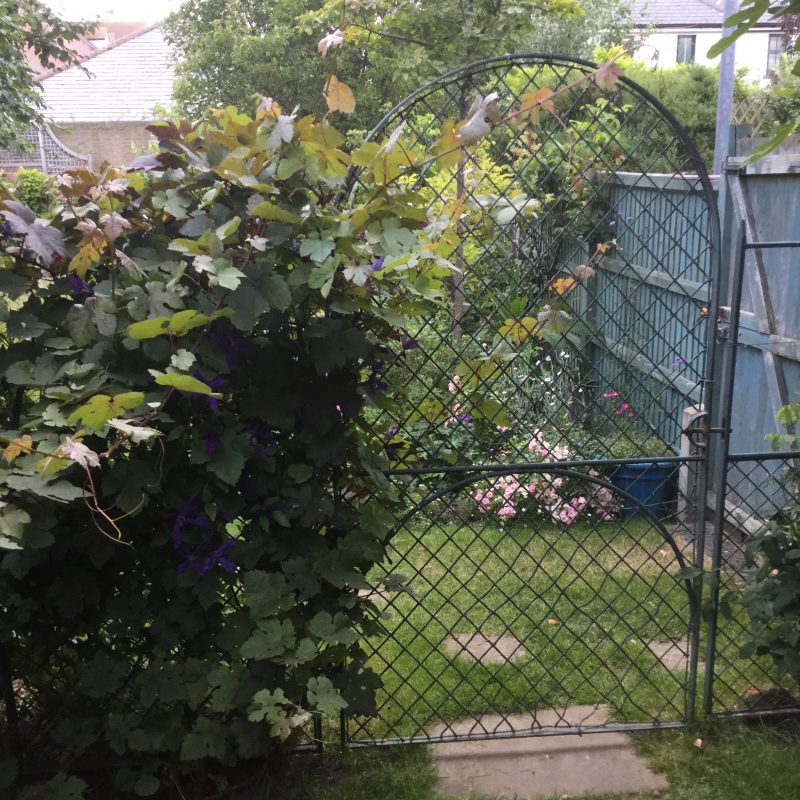
An old metal gate marks the entrance to the end garden and the meadow
Every year the plants are different. ‘In a sense it is nature that does the work,’ says Amanda, ‘nature at its most gentle and extraordinary.’ Greater knapweed appears early on. Other plants include goat’s beard, birdsfoot trefoil, lady’s bedstraw, salad burnet, bladder campion and, of course, the graceful wild carrot. Butterflies abound and bats have returned to the garden. Perhaps, in a year or two, orchids will appear.
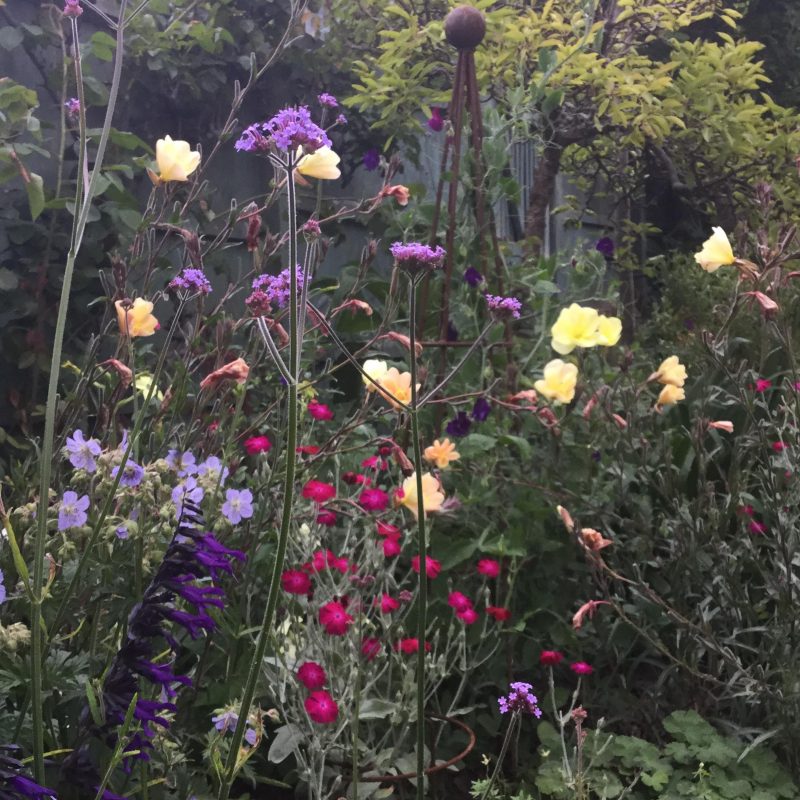
A colourful mixed border
If you haven’t yet visited this soothing place, which awakes atavistic memories and reattaches us to the natural world, plan a trip next summer. Remember: the last Sunday in June.
Words: Sarah Langton-Lockton. Photographs: Posy Gentles and Edward Mannering